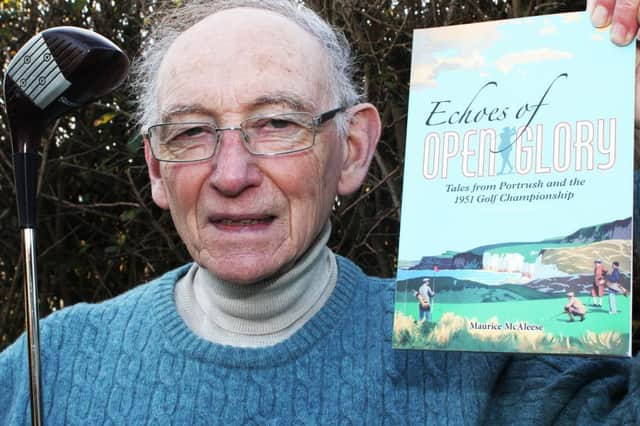Maurice recalls the impact of The Open on Portrush in 1951


It is a remarkable story told here by retired journalist Maurice, who admits that he is “just old enough” to remember seeing some of the top players of the day in action on the Dunluce fairways in 1951.
As well as having a focus on what happened on and off the course during that celebrated Championship, he touches on some of the not so well known aspects of the game in this small corner of the world and along the way gives a glimpse of life in Portrush and North Antrim in that mid-twentieth century period.
Advertisement
Hide AdAdvertisement
Hide Ad“In the summer of 1951 a large slice of golfing history was made in Portrush,” recalled the Portrush man.
“This small seaside town had been chosen as the venue for the Open Championship, the oldest and most prestigious fixture in world golf.
“It was the first, and still is today, the only time the Championship has been played on a links course outside the British mainland. The good news is that the R and A, the Open’s governing body, has confirmed that it will be staged again in Portrush, probably in 2019.
“In 1951 I was a young teenager keenly interested in golf so I was really looking forward to seeing some of the world’s top players in action over the famous Dunluce championship links.
Advertisement
Hide AdAdvertisement
Hide Ad“Top of my list, of course, was Fred Daly who had won the Open at Hoylake in 1947 and would be bidding to win it again in his home town.
“Over the three days of that historic Championship I remember seeing not only Fred Daly in action but also players like Bobby Locke, endeavouring to claim his third Open title in a row; Henry Cotton, Dai Rees and a youthful Peter Alliss, making his debut as a professional and, of course, the winner, Max Faulkner.
“I was somewhere in the crowd gathered around the last green at Royal Portrush – there was no tiered seating then – when the stylish and flamboyant Faulkner rolled in his last putt to win that historic Championship.
“I don’t remember if, in his moment of triumph, he threw the ball into the crowd as often happens on such occasions, providing a coveted souvenir for some lucky spectator. The ball was a Dunlop 65 with the number 2 stamped on it. I know this because along with a multi-autographed copy of the official programme, it now forms part of a unique private collection not only of golfing memorabilia but also many other items of local history interest.
Advertisement
Hide AdAdvertisement
Hide Ad“Niall O’Boyle is a member of Portstewart Golf Club, where the Open’s qualifying rounds were played, and believe it or not, the prized exhibit in that collection of his is the very shoes that Max Faulkner was wearing when he strode over the Dunluce links and into the history books that day in 1951. It’s a fascinating story and thanks to Niall I have been able to include it in the book.
“I am very pleased also that I managed to obtain an “exclusive” little input from Peter Alliss, one of the competitors in that 1951 Open. As a commentator, he is very much regarded today as the “golden voice of golf” and he responded positively to my request for some of his memories when, as a 21-year-old, he was just setting out on his distinguished career as a professional.
“He remembers Max Faulkner as “a flamboyant character who brought colour to our dull lives.
“As well as having a focus on what happened on and off the course in that celebrated Championship, Echoes of Open Glory touches on some of the not so well known aspects of the Royal and Ancient game in this small corner of the world. When not weaving in and out of some of those old fairways, I have endeavoured to give what I hope is an illuminating glimpse of life in Portrush, where I was born and grew up, in that exciting mid-20th century period.”